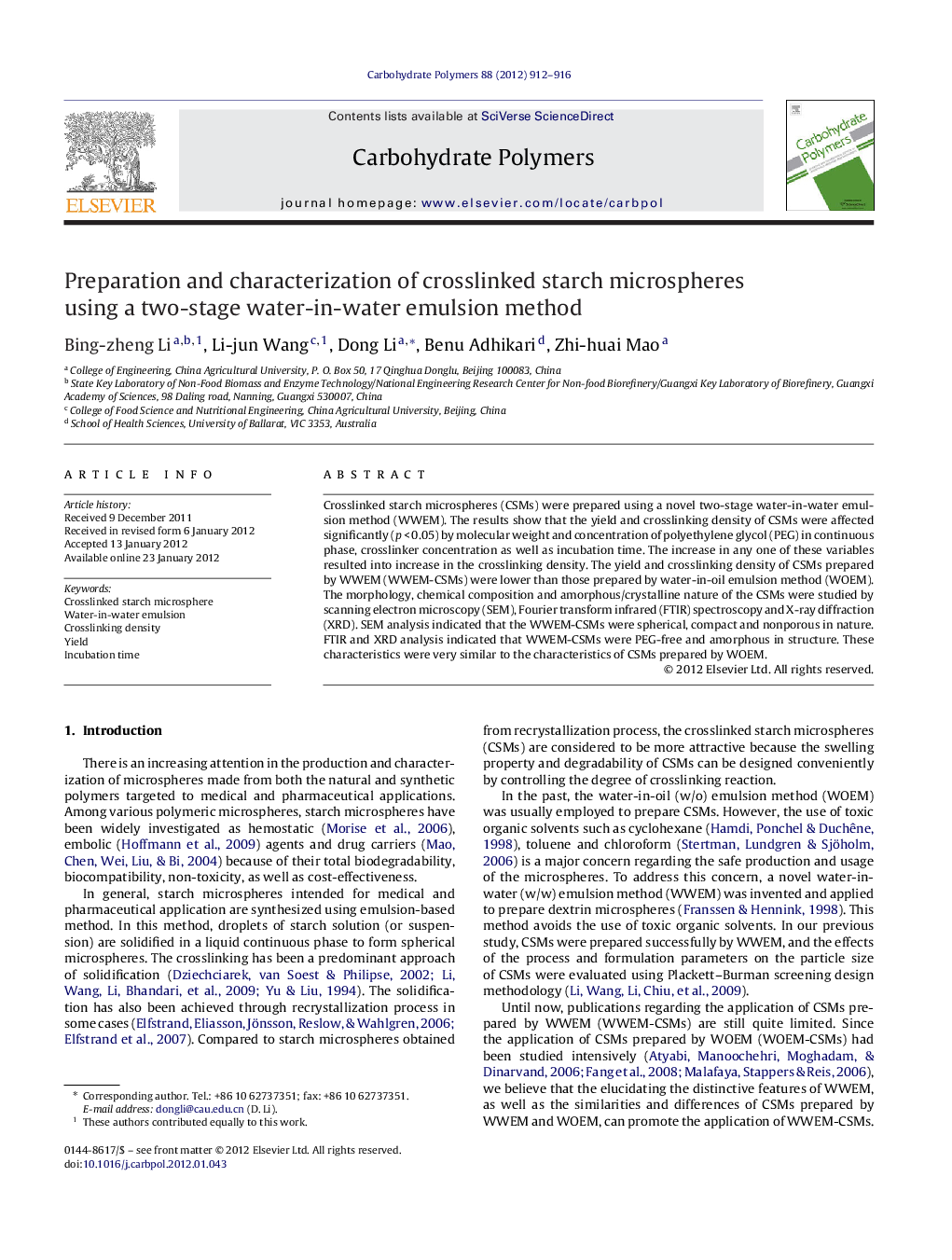| Article ID | Journal | Published Year | Pages | File Type |
|---|---|---|---|---|
| 1377274 | Carbohydrate Polymers | 2012 | 5 Pages |
Crosslinked starch microspheres (CSMs) were prepared using a novel two-stage water-in-water emulsion method (WWEM). The results show that the yield and crosslinking density of CSMs were affected significantly (p < 0.05) by molecular weight and concentration of polyethylene glycol (PEG) in continuous phase, crosslinker concentration as well as incubation time. The increase in any one of these variables resulted into increase in the crosslinking density. The yield and crosslinking density of CSMs prepared by WWEM (WWEM-CSMs) were lower than those prepared by water-in-oil emulsion method (WOEM). The morphology, chemical composition and amorphous/crystalline nature of the CSMs were studied by scanning electron microscopy (SEM), Fourier transform infrared (FTIR) spectroscopy and X-ray diffraction (XRD). SEM analysis indicated that the WWEM-CSMs were spherical, compact and nonporous in nature. FTIR and XRD analysis indicated that WWEM-CSMs were PEG-free and amorphous in structure. These characteristics were very similar to the characteristics of CSMs prepared by WOEM.
► Crosslinked starch microspheres were prepared using a two-stage emulsion method. ► This method was found to be more energy efficient than w/o emulsion to prepare CSMs. ► The properties of CSMs prepared by these two methods were identical. ► Yield of CSMs obtained from w/w emulsion was lower that obtained from w/o emulsion. ► Crosslinking density of CSMs obtained from w/w emulsion was lower than w/o emulsion.
